Planting Calendar for Every Season: Get the Best Out of Your Garden in 2024
- June 11, 2024
- 0 comment
Discover year-round gardening success with our Planting Calendar for Every Season. Essential tips for a lush 2024 garden. Are you ready to cultivate a garden that thrives in every season? With our expert guide, you’ll learn how to maximize your green space throughout the year.
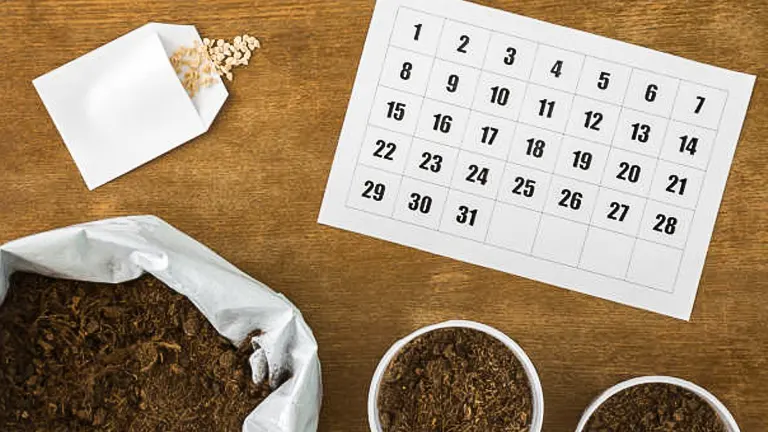
Whether you’re planning for spring blooms or autumn harvests, we have all the insights you need. Dive into our seasonal planting strategies and ensure your garden remains vibrant and productive in 2024.
Table of Contents
- Understanding Seasonal Planting
- Planting Calendar for Every Season
- Year-Round Care Tips
- Advanced Techniques for Experienced Gardeners
- Conclusion
- FAQs
Understanding Seasonal Planting
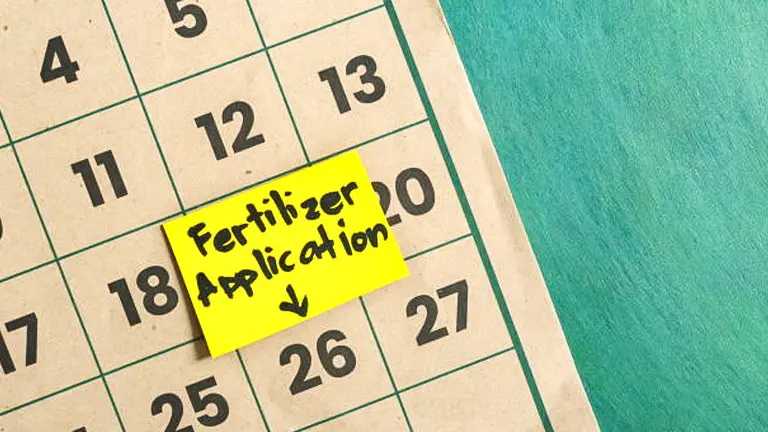
A planting calendar serves as a crucial strategic guide, meticulously tailored to harmonize with the climatic conditions of your region and the intrinsic growth cycles of your plants. This alignment is essential not only for optimizing growth but also for bolstering plant health and resilience against pests and diseases.
The Science of Phenology and Planting
Phenology, the study of periodic plant and animal life cycle events and how these are influenced by seasonal variations in climate, as well as habitat factors, plays a fundamental role in gardening. By observing the phenological cues such as the blooming of specific flowers or the emergence of insects, gardeners can predict the perfect planting time for each species in their garden more accurately.
For example, studies have shown that planting seeds when certain indicator plants bloom can lead to earlier and more vigorous growth. The following table illustrates how common garden plants can be effectively planted in synchronization with natural indicators:
| Indicator Plant | Related Action | Benefit |
|---|---|---|
| Forsythia blooms | Plant peas, spinach, and kale | Maximizes growth window in early spring |
| Cherry blossoms | Plant corn and tomatoes | Synchronizes with optimal soil temperature |
| Apple blossoms | Plant bush and pole beans | Avoids late frosts and utilizes peak fertility |
Climate Zones and Their Impact
Understanding your local climate zone is critical. The United States Department of Agriculture (USDA) divides North America into 13 primary planting zones, each delineated by a 10°F difference in the average annual minimum temperature. The zone in which you live affects not just the plant species that will thrive but also the timing of their growth phases.
Plants are often tagged with a zone-specific range, indicating where they can survive winter. For instance, a plant labeled for zones 5-9 is suitable for temperatures as low as -20°F to 30°F during the dormant season. Knowledge of these zones allows gardeners to make informed decisions about when to plant so that plants are neither dormant nor excessively stressed by temperature.
Microclimate Effects
Microclimates are small areas where the climate differs from the surrounding area. Your garden might have several microclimates depending on sun exposure, wind patterns, and topography. For example, a shaded garden corner might be cooler than an exposed southern wall. Utilizing these microclimates can extend your growing season by protecting plants from late frosts or providing shade during the peak summer months.
To leverage these nuances in your planting calendar, consider the following adjustments:
- Shade Variations: Plant shade-tolerant species in cooler parts of the garden.
- Sun Exposure: Use sunnier spots for heat-loving plants.
- Wind Protection: Position taller plants to shield sensitive varieties from strong winds.
By integrating phenological data, climate zone specifics, and microclimate adjustments into your planting strategy, you can significantly enhance the success and productivity of your garden. This approach not only maximizes plant health and yield but also appeals to the scientifically curious gardener looking to optimize every variable at their disposal.
Planting Calendar for Every Season
1. Spring Planting Guide
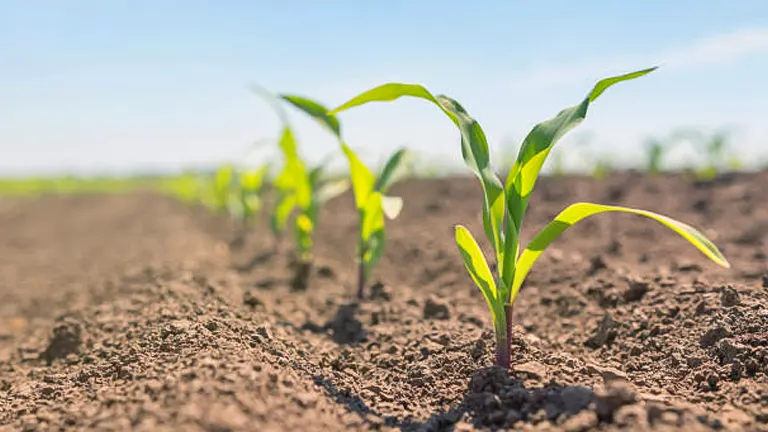
Spring heralds new beginnings in the garden. As the frost recedes and daylight extends, this season is pivotal for establishing the foundation of your garden’s annual cycle. Proper planning and execution during spring not only set the stage for a productive summer but also help mitigate challenges throughout the year.
Optimal Planting Times for Spring Crops
Understanding the right time to plant is crucial. Here’s a detailed table that breaks down optimal planting times for various crops based on average last frost dates and soil temperatures:
| Crop Type | Examples | Indoor Start Date | Outdoor Sow Date |
|---|---|---|---|
| Vegetables | Tomatoes, Peppers, Eggplants | 6-8 weeks before last frost | After last frost |
| Leafy Greens | Lettuce, Spinach, Peas | Not applicable | As soon as soil is workable |
| Fruits | Berry bushes, Fruit trees | Not applicable | After last frost |
| Flowers | Pansies, Snapdragons | 4-6 weeks before last frost | As soon as soil is workable |
Soil Preparation and Enhancement
Spring soil preparation is a critical step. Begin by removing any weeds and debris accumulated over winter. Testing your soil early in the season will provide insights into its nutrient profile and pH level, guiding your amendment strategy. Incorporating organic matter such as compost or well-rotted manure improves soil structure, enhances nutrient content, and boosts microbial activity, all of which contribute to healthier plant growth.
Here are some key indicators from soil testing and the corresponding amendments:
| Soil Property | Desired Range | Amendments If Needed |
|---|---|---|
| pH Level | 6.0 – 7.0 for most plants | Add lime to increase pH, sulfur to decrease pH |
| Nitrogen (N) | Moderate to high | Add aged manure or a nitrogen-rich fertilizer |
| Phosphorus (P) | Sufficient for root development | Bone meal or phosphate rock if deficient |
| Potassium (K) | Essential for cell function | Potash for deficiency |
Pest Management Strategies
Early spring is when pests start to become active after winter dormancy. Implementing an integrated pest management (IPM) approach can effectively reduce damage without relying heavily on chemicals. Begin by inspecting your garden regularly for early signs of infestation. Introduce beneficial insects like ladybugs and lacewings that prey on common pests such as aphids and mites. For larger pests, such as slugs and snails, barrier methods like copper tape or diatomaceous earth can be effective. Organic sprays based on neem oil can also be used as a preventative measure.
Tips for Successful Spring Planting
- Timing: Follow the local frost dates and monitor soil temperature to determine the exact timing for planting seeds or transplanting seedlings.
- Watering: Spring weather can be unpredictable. Implement a consistent watering schedule during dry spells to ensure that plants receive enough moisture.
- Hardening Off: Gradually acclimate indoor-started seedlings to outdoor conditions by placing them outside for a few hours each day. This reduces transplant shock and improves survival rates.
2. Summer Planting Guide
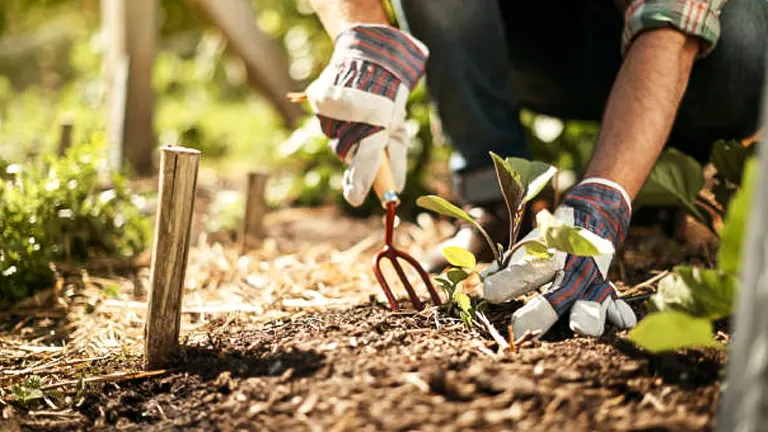
Summer is a vibrant period in the garden, characterized by rapid growth and the potential for bountiful harvests. This is the time to plant heat-loving vegetables such as okra, sweet potatoes, and cucumbers, which thrive in the warmth. Herbs like basil, cilantro, and dill are also ideal for sowing now, as they need the warm soil to flourish. Flower enthusiasts should consider planting marigolds, zinnias, and petunias, which not only add a splash of color but also attract pollinators.
Optimal Plants for Summer Growth
The selection of crops planted during summer is critical, as not all plants can withstand the intense heat. Here is a table highlighting some key plants suitable for summer planting, along with their specific heat tolerance and growth requirements:
| Plant Type | Examples | Soil Temp Range (°F) | Light Requirements | Water Needs |
|---|---|---|---|---|
| Vegetables | Okra, Sweet Potatoes, Cucumbers | 70-95 | Full sun | High |
| Herbs | Basil, Cilantro, Dill | 65-85 | Full sun to partial shade | Moderate |
| Flowers | Marigolds, Zinnias, Petunias | 60-75 | Full sun | Moderate to high |
Advanced Water Management Techniques
Efficient water management is paramount during the hot summer months to prevent stress and ensure plant health. Here are some scientifically-backed strategies:
- Organic Mulching: Applying a 2-3 inch layer of organic mulch such as straw, bark, or shredded leaves helps maintain soil moisture levels, reduces soil temperature, and suppresses weed growth. Research indicates that mulching can reduce water evaporation from the soil by up to 70%.
- Drip Irrigation: Installing a drip irrigation system provides water directly to the plant roots where it’s most needed. This method is up to 90% efficient in water use compared to traditional sprinkling and can significantly reduce the frequency of watering.
Pest and Disease Management
Summer heat can exacerbate pest and disease issues. Regular monitoring and early intervention are crucial:
- Pruning: Removing diseased or dead foliage not only promotes better air circulation but also reduces the habitat for pests and disease. Prune early in the morning to allow cut surfaces to dry out, minimizing disease transmission.
- Plant Stress Indicators: Watch for signs such as wilting, yellowing leaves, or stunted growth. These symptoms often indicate water stress, nutritional deficiencies, or disease. Adjust watering schedules, provide shade during peak sun hours, and apply appropriate nutrients or treatments.
Enhancing Pollinator Attraction
Flowers like marigolds, zinnias, and petunias do more than beautify the garden—they attract pollinators which are vital for the fruit-setting process in many vegetables and fruits. To maximize this benefit:
- Diversity: Plant a variety of flowers to attract different types of pollinators.
- Continuous Bloom: Ensure there are always blossoming plants throughout the season to provide consistent pollinator support.
3. Autumn Planting Guide
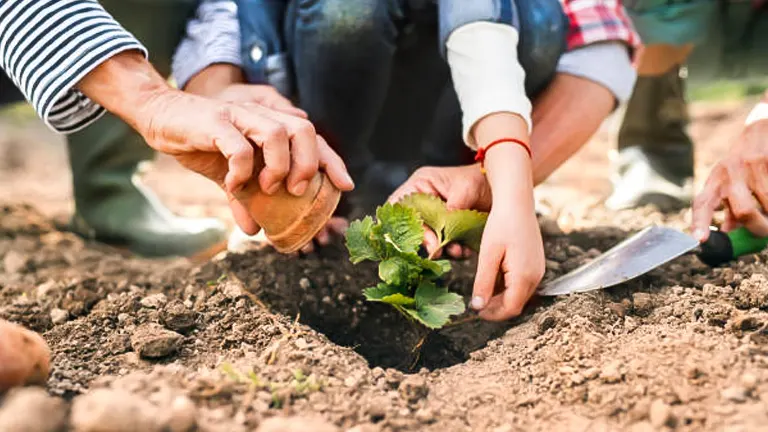
Autumn ushers in cooler temperatures and shorter days, which are ideal for growing a variety of cool-season crops and preparing the garden for winter. This period offers a unique opportunity to extend the growing season and to establish plants for a vibrant spring display.
Optimal Plants for Autumn Growth
The focus in autumn is on plants that thrive in cooler weather and can even benefit from a light frost. Below is a table detailing some key plants for autumn planting, along with their growth requirements and frost tolerance:
| Plant Type | Examples | Soil Temp Range (°F) | Frost Tolerance | Notes |
|---|---|---|---|---|
| Vegetables | Lettuce, Kale, Radishes | 50-70 | High | Thrive in cool temperatures; quick harvest times |
| Perennials | Peonies, Hostas | 55-65 | Moderate to high | Establish roots in cool weather; bloom in spring |
| Bulbs | Tulips, Daffodils | 40-55 | Very high | Plant in autumn for spring blooms |
Soil Preparation and Enhancement
Preparing the soil in autumn is crucial for plant health and resilience:
- Nutrient Replenishment: Autumn is the perfect time to enrich the soil. Adding compost or well-rotted manure introduces beneficial microorganisms and essential nutrients. Scientific studies suggest that incorporating organic matter can increase water retention by up to 20%, enhancing soil structure and fertility.
- Mulching: Applying a new layer of organic mulch such as straw or shredded leaves can protect plant roots from freezing temperatures and reduce water loss due to evaporation. Mulch acts as an insulator, keeping the soil warmer and more stable during winter fluctuations.
Frost Management Strategies
As the first frosts can be both a challenge and a cue for certain garden activities, here are effective ways to protect your garden:
- Frost Cloths: Use frost cloths or horticultural fleece to cover sensitive plants when frost is forecasted. These materials allow light and moisture to reach the plants while providing a barrier against the cold.
- Microclimate Utilization: Plant sensitive species in areas that are naturally shielded from cold winds or that receive winter sun. Utilizing microclimates within your garden can significantly enhance survival rates through colder months.
Autumn Garden Maintenance
Regular maintenance in autumn not only prepares your garden for winter but also sets the stage for the next growing season:
- Pruning: Prune dead or diseased branches from trees and shrubs. This helps to prevent the spread of disease and pests and promotes healthy growth in the spring.
- Plant Protection: For very tender perennials or exotic plants, consider moving potted specimens to a greenhouse or indoors to ensure survival over winter.
- Watering: While overwatering can be a concern as the weather cools, ensure that plants receive enough moisture, especially during prolonged dry spells, as this can affect their winter hardiness.
4. Winter Planting Guide

Winter in the garden is often seen as a period of dormancy and preparation rather than active growth, but with strategic planning, it can be a productive time. Here’s how to maximize the winter months to ensure your garden thrives in the coming seasons.
Resilient Winter Crops
Even in the coldest months, certain crops can be planted that will endure winter’s harshness and jump-start production early in spring. Below is a table detailing these crops, along with their specific cold tolerance and planting timings:
| Crop Type | Examples | Planting Time | Cold Tolerance | Notes |
|---|---|---|---|---|
| Root Vegetables | Garlic, Onions | Late fall to early winter | High | Establish roots in winter, sprout in early spring |
| Leafy Greens | Kale, Spinach | Early to mid-fall | Moderate to high | Use cold frames for frost protection, extends harvest |
Indoor Gardening Dynamics
Winter is an ideal time to cultivate a variety of plants indoors:
- Herbs: Basil, parsley, and mint are excellent choices for indoor cultivation. These herbs prefer bright, indirect sunlight and can be grown on kitchen windowsills to add freshness to your winter cuisine.
- Seed Starting: Begin sowing seeds for spring crops like tomatoes, peppers, and eggplants indoors. Starting seeds indoors not only protects them from the cold but also gives them a head start on the growing season. For optimal growth, maintain indoor temperatures between 65°F and 75°F and use grow lights to simulate longer daylight hours.
Strategic Winter Gardening Tasks
Winter also offers the chance to enhance garden structure and soil quality:
- Pruning: This is the best time to prune dormant trees and shrubs. Pruning during dormancy minimizes stress on plants and makes them less susceptible to disease. The goal is to remove dead or diseased wood and shape the plant for the upcoming growth season.
- Garden Evaluation and Planning: Analyze the successes and challenges of the past year. Plan garden layout changes and consider new crop rotations for the upcoming year to prevent soil depletion and manage pests naturally.
- Soil Preparation and Protection:
- Soil Testing and Amendment: Conduct a soil test to determine pH levels and nutrient deficiencies. Winter is an excellent time for adding lime (to raise pH) or sulfur (to lower pH) based on the soil test results. This allows the amendments to integrate with the soil before spring planting.
- Mulching and Cover Crops: Applying a layer of organic mulch protects the soil from erosion and temperature extremes. Planting cover crops, such as clover or winter rye, can significantly enhance soil structure, add organic matter, and fix nitrogen in the soil.
Year-Round Care Tips
A successful garden requires ongoing maintenance. Regular tasks such as watering, weeding, and pruning do not just keep your garden looking tidy; they help prevent pests and diseases from taking hold. Develop a schedule for checking plant health, and adjust care tactics based on seasonal changes.
Pest and disease management should be proactive. Regular inspections can catch issues before they become severe, and natural remedies like neem oil or insecticidal soap can treat many common garden pests and diseases without harming the environment.
Fertilization is crucial throughout the year but varies with the seasons. In spring, a nitrogen-rich fertilizer encourages leafy growth, while phosphorus and potassium are more important in the fall to support root development and prepare plants for winter.
Advanced Techniques for Experienced Gardeners
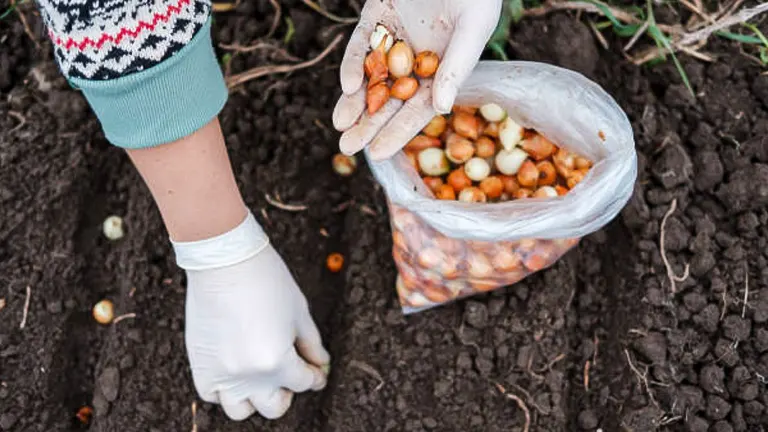
Succession Planting: Succession planting is a strategic approach that extends the productivity of your garden. By planning multiple planting dates for the same crop within a single season, you can achieve a continuous supply of produce. For example, planting lettuce every two weeks ensures a steady harvest of fresh leaves throughout the growing season. This technique can also be applied to other quick-growing vegetables like radishes and green onions, effectively maximizing your garden’s yield and efficiency.
Intercropping: Intercropping is an innovative gardening technique where two or more crop species are planted in close proximity. This method is designed to mimic natural ecosystems, leading to several beneficial outcomes:
- Pest Management: Natural pest deterrents arise from the aromatic compounds produced by certain plants, reducing the need for chemical pesticides. For example, marigolds can deter nematodes when planted near tomatoes.
- Improved Soil Health: Different plant species contribute varied nutrients back to the soil. Legumes, for instance, fix nitrogen, enhancing soil fertility for neighboring crops like corn.
- Spatial Efficiency: Tall crops such as corn can be paired with low-growing, shade-tolerant plants like spinach, maximizing the use of vertical and horizontal space and reducing weed growth.
Technological Integration in Gardening:
- Garden Planning Apps: These apps provide tools for tracking planting and harvesting times, managing garden layouts, and receiving customized care reminders for each plant.
- Soil Moisture Sensors: These devices monitor soil moisture levels in real time, enabling gardeners to water their plants precisely when needed, thereby optimizing water usage and promoting plant health.
Recent studies highlight the quantitative benefits of these techniques. For example, research conducted by the Agricultural Research Service found that intercropping corn with legumes can increase yield by up to 20% while reducing fertilizer use by 30% due to the nitrogen-fixing properties of legumes.
Summary Table of Benefits and Techniques
| Technique | Benefits | Example Implementations |
|---|---|---|
| Succession Planting | Extended harvest period, maximized yield | Lettuce planted bi-weekly |
| Intercropping | Pest reduction, improved soil health, increased spatial efficiency | Corn planted with squash and legumes |
| Technological Integration | Precision in care, time efficiency | Use of garden planning apps and soil moisture sensors |
Related Post
- How to Build a Barn: A Step-by-Step Guide for Beginners
- How to Build a Sustainable Compost Bin: Easy and Eco-Friendly DIY
- How to Fertilize Bougainvillea: A Complete Guide for Stunning Blooms
- How to Fertilize Apple Trees: Essential Tips for a Bountiful Harvest
- How to Fertilize Lemon Trees: Secrets for Thriving Citrus
- How to Fertilize Avocado Tree: A Step-by-Step Guide for Lush Growth
- 10 Best Bow Saws to Buy in 2024: Top Picks for the Money
- Best Miter Saw For Beginners
- Top 10 Pruning Saws to Buy in 2024: Best for the Money
- 7 Best Pocket Chainsaw
Conclusion
Adhering to a well-structured planting calendar is key to cultivating a thriving garden throughout the year. By understanding your local climate and soil conditions, choosing the right plants for each season, and employing advanced gardening techniques, you can maximize both the beauty and productivity of your garden space.
Remember, the most productive gardens are those that are well-planned and well-loved. Regular care, timely planting, and the willingness to adapt to your garden’s needs are crucial for success. Experiment with new methods, keep learning, and enjoy the rewards of your efforts through every season of 2024.
FAQs
- What is the best way to determine which plants are suitable for my garden’s climate zone?
To find the best plants for your garden, refer to the USDA Plant Hardiness Zone Map if you are in the U.S. This map will show you which plants are most likely to thrive in your geographic area based on average minimum winter temperatures. - How often should I update my soil testing to ensure optimal plant health and growth?
It’s recommended to test your soil every 2-3 years, or more frequently if you notice problems with plant growth or health. Regular testing helps monitor soil pH and nutrient levels, enabling you to adjust your soil amendments and fertilization practices accordingly. - Can I plant summer vegetables in the spring?
Yes, but timing is crucial. Summer vegetables like tomatoes and peppers should be started indoors or planted outdoors only after the last frost date has passed to avoid damage from cold temperatures. - What are some effective strategies for watering my garden during the hot summer months?
Implementing drip irrigation systems or soaker hoses ensures water is delivered slowly and directly to the roots, reducing evaporation and saving water. Additionally, watering early in the morning helps minimize water loss and allows plants to utilize the water effectively throughout the day. - Which vegetables are ideal for a fall garden, and why?
Cool-weather crops like kale, carrots, and radishes are ideal for fall planting because they can withstand light frosts and mature during cooler weather, often resulting in sweeter flavors due to reduced heat stress. - How can I protect my winter crops from extreme cold and frost?
Utilize cold frames, hoop houses, or floating row covers to create a more controlled microclimate around your plants. These structures help retain heat and block frost, extending your growing season even in colder climates. - What are some advanced gardening techniques that can help increase my garden’s yield?
Techniques like vertical gardening, using trellises for climbing plants, and practicing square foot gardening can maximize space and increase yield. Also, rotating crops annually prevents soil depletion and reduces pest and disease issues. - How can technology help me be more precise in my gardening activities?
Technology such as gardening apps can track planting and harvesting times, remind you of fertilization schedules, and even offer advice on pest control. Soil moisture sensors can help ensure your plants receive just the right amount of water, enhancing plant health and water use efficiency.
As you gear up for a year of fruitful gardening, remember that a thoughtful approach to planting through each season can transform your garden into a vibrant, productive haven.

Kristine Moore
Forestry AuthorI'm Kristine Moore, a seasoned garden landscaping professional with over 30 years of experience. My extensive career has been dedicated to transforming outdoor spaces into stunning, sustainable landscapes. With a deep understanding of horticulture, design principles, and environmental stewardship, I have become a respected figure in the field, known for creating harmonious, visually appealing, and eco-friendly gardens. My commitment to excellence and continuous learning in landscaping trends and techniques has solidified my reputation as an expert in garden design and implementation.







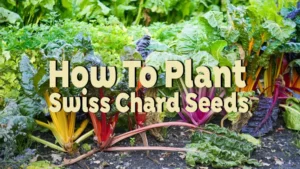



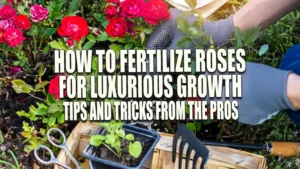

Leave your comment